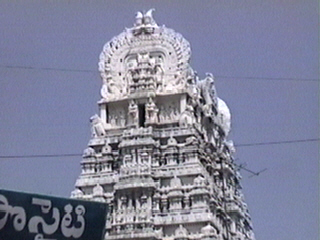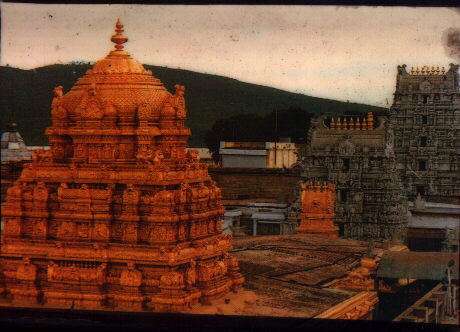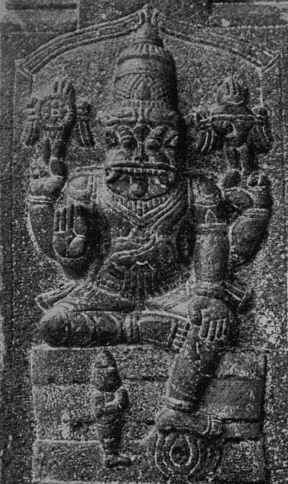Akiripalli
Akiripalli near Vijayawada is home to a hill temple bearing a cave shrine to Vyagra Narasimha and a temple to Malleswara Shiva. The hill is also known as Sobhanachalam.
The hill temple also has shrines to Rajyalakshmi, and to all of the Alwar saints of Tamilnadu. The Nammalwar Adhyayanotsavam is celebrated in this temple once a year.
Legend has it that a king by name Subhavrata meditated upon Vishnu and Shiva and was blessed with a vision of Narasimha and Shiva on this hill. The hill is known as Sobhanadri after the king Subhavrata.
The Varaha theertham or tank is located to the west of the hill. Legend has it that Vishnu in his Varaha avatara dug out this tank, and hence the name Varaha pushkarini. The word kiri refers to Varaha, and hence the name of the place - Akiripalli.
This Akiritemple celebrates festivals such as the adhyayanotsavam, Ratha Saptami with a chariot procession, the full moon night in the month of Kartika and so on.
Akiripalli near Vijayawada is home to a hill temple bearing a cave shrine to Vyagra Narasimha and a temple to Malleswara Shiva. The hill is also known as Sobhanachalam.
The hill temple also has shrines to Rajyalakshmi, and to all of the Alwar saints of Tamilnadu. The Nammalwar Adhyayanotsavam is celebrated in this temple once a year.
Legend has it that a king by name Subhavrata meditated upon Vishnu and Shiva and was blessed with a vision of Narasimha and Shiva on this hill. The hill is known as Sobhanadri after the king Subhavrata.
The Varaha theertham or tank is located to the west of the hill. Legend has it that Vishnu in his Varaha avatara dug out this tank, and hence the name Varaha pushkarini. The word kiri refers to Varaha, and hence the name of the place - Akiripalli.
This Akiritemple celebrates festivals such as the adhyayanotsavam, Ratha Saptami with a chariot procession, the full moon night in the month of Kartika and so on.







